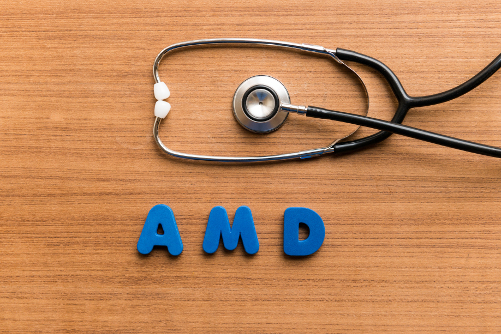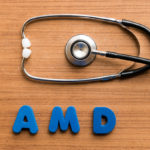Is There a Macular Degeneration Treatment Breakthrough on the Horizon?
Written by Dr. David Evans Last modified on April 22, 2019
Macular degeneration — the leading cause of blindness in people aged 65 and over — is a serious eye condition that does not yet have any corrective treatment approved by the FDA. The age-related disease causes the deterioration of the macula, an essential retinal component for clear, central vision.
Although there are a variety of treatments that are intended to slow progression of the condition and control vision loss, none have yet proven capable of reversing the damage. But that’s not to say there aren’t hundreds (if not thousands) of macular degeneration (AMD) specialists and researchers working to change that.

I recently came across an article published by CNN detailing a study published in The New England Journal of Medicine focused on the use of stem cells to treat AMD. Stem cell research has long been a controversial subject, but there’s no denying that there have been a number of scientific breakthroughs attributed to their use. (Here are 10 stem cell breakthroughs identified by the British Heart Foundation.)
When we speak of stem cell research, it’s typically focused on a particular type of stem cell: embryonic. What makes this new AMD stem cell study unique is that it’s the first of its kind to use a type of stem cell called induced pluripotent (IPS). That is to say stem cells that are derived from the patient, making them genetically identical cells. This helps to take tissue rejection out of the equation, something that is not uncommon with donor embryonic stem cells.
Researchers from the Laboratory for retinal regeneration at RIKEN Center for Developmental Biology in Japan used IPS in the treatment of a 77-year old Japanese woman with “wet” AMD. (There are two types of AMD: dry and wet, the latter being the more severe variant less responsive to treatments and more likely to cause blindness.) Although the vast majority of AMD cases in the U.S. are of the dry variety, the opposite is true in Japan where wet AMD is more common. Treatment involved creating a “sheet” of retinal pigment epithelial cells using stem cells taken from the patient’s connective tissue of the skin. This sheet of retinal pigment cells was then surgically placed under the retina of one of the patient’s eyes. One year on from surgery, the implanted sheet remained intact and the patient had suffered no adverse effects. Although the patient’s vision did not improve over the course of the year, it stabilized, meaning that the rapid deterioration associated with wet AMD was prevented. That’s huge.
The success of this Japanese study is contrasted by a failed treatment in 2015 that involved three patients in the U.S. between the ages of 72 and 88. All three patients suffered from dry AMD and signed up for a trial offered through a clinic in Florida. Like the Japanese study, the Florida treatment used IPS cells derived from the patients, however they were harvested from fat cells in the abdomen. The stem cells were then injected into both eyes of each patient. All three women were blinded as a result of the failed treatment.
Although the unmitigated failure of the Florida treatment may cast doubt of the efficacy of IPS as a treatment for AMD, proponents are quick to point out some suspect details surrounding the Florida case. Although the patients assumed this to be a clinical trial because it was featured on ClinicalTrials.gov, the government run site does not scrutinize each study, meaning that the scientific legitimacy of any such trial could be questionable. Second, and perhaps most importantly, the patients were required to pay $5,000 for the treatment. This is considered a big red flag given that most clinical trials are offered free of charge due to the potential risks. Finally, the fact that the Florida clinic performed the experimental treatment on both eyes at the same time is abnormal. Typically, only one eye would be treated to protect against potential side effects.
At the end of the day, IPS AMD treatment is still in the very early stages of investigation and it does not seem that any sort of immediate breakthrough is forthcoming. But there’s no denying that the work researchers are doing on this (and other) macular degeneration studies gives hope that a treatment breakthrough of some kind beckons in the near future. We’ll certainly keep you updated as the story develops.
If you’re interested in learning more about this study, check out the article I was reading on CNN: http://www.cnn.com/2017/03/15/health/stem-cell-age-related-macular-degeneration-study/index.html
For more information on AMD, check out our articles on macular degeneration treatments and driving with AMD.




